The Movie
I was feeling unusually patriotic last night for some reason, and so I decided to watch something a little different from the usual collection of body horror, film noir, and dark comedy that make up most of my evening cinematic diversions.

So Proudly We Hail came out 1943, about eighteen months after the events it supposedly depicts. Its female leads Claudette Colbert (1903-1996), Paulette Goddard (1910-1990), and Veronica Lake (1922-1973) were among the Hollywood’s brightest stars in 1943. The movie was produced by Paramount Pictures, one of the bigs and it shows in high production values with large sets and a huge cast. And just like the box says, the movie did get four Academy Award nominations: Best Supporting Actress (for Goddard), Best Cinematography, Best Visual Effects, and Best Original Screenplay.
So this movie was big deal in 1943. And it deserves to be: it was exceptional American war propaganda, quite skillfully representing its American protagonists as humane, decent, and courageous while representing their Japanese antagonists (never really seen except in shadows or as taunting radio voices) as thoroughly vile, the sort of people that would bomb and strafe a clearly-marked hospital (which they actually do in the course of the movie). It’s a tear-jerker but with bit of Hollywood uplift in the ending.
As such, it might be a bit surprising that the movie isn’t better known than it is, but I think I might know why. You see, there’s this scene right at the halfway point of the movie.
The scene
It is 1942. The American Army and its Filipino allies are getting their collective asses kicked by the Japanese down the Bataan peninsula. A group of nurses under the command of Lt. Janet ‘Davy’ Davidson are under orders to evacuate with the rest of their field hospital, together with a group of sick and wounded Filipino children under their care. Unluckily for them their group is one of the last out. A squad of Japanese soldiers infiltrates the hospital grounds and kills the two soldiers assigned to drive their truck out. The nurses and children huddle in a shack in the dark, clearly terrified. One recalls (rather loudly) what Japanese soldiers did to women in Nanjing in 1937. Colbert throws one of the dead soldiers’ grenades away from the shack as a distraction and makes for the truck, only to discover that she doesn’t have the ignition keys.
At this point Lt. Olivia D’Arcy (Lake) takes a grenade of her own. There is a brief conversation in which Lake tells Colbert “It’s one of us or all of us.”
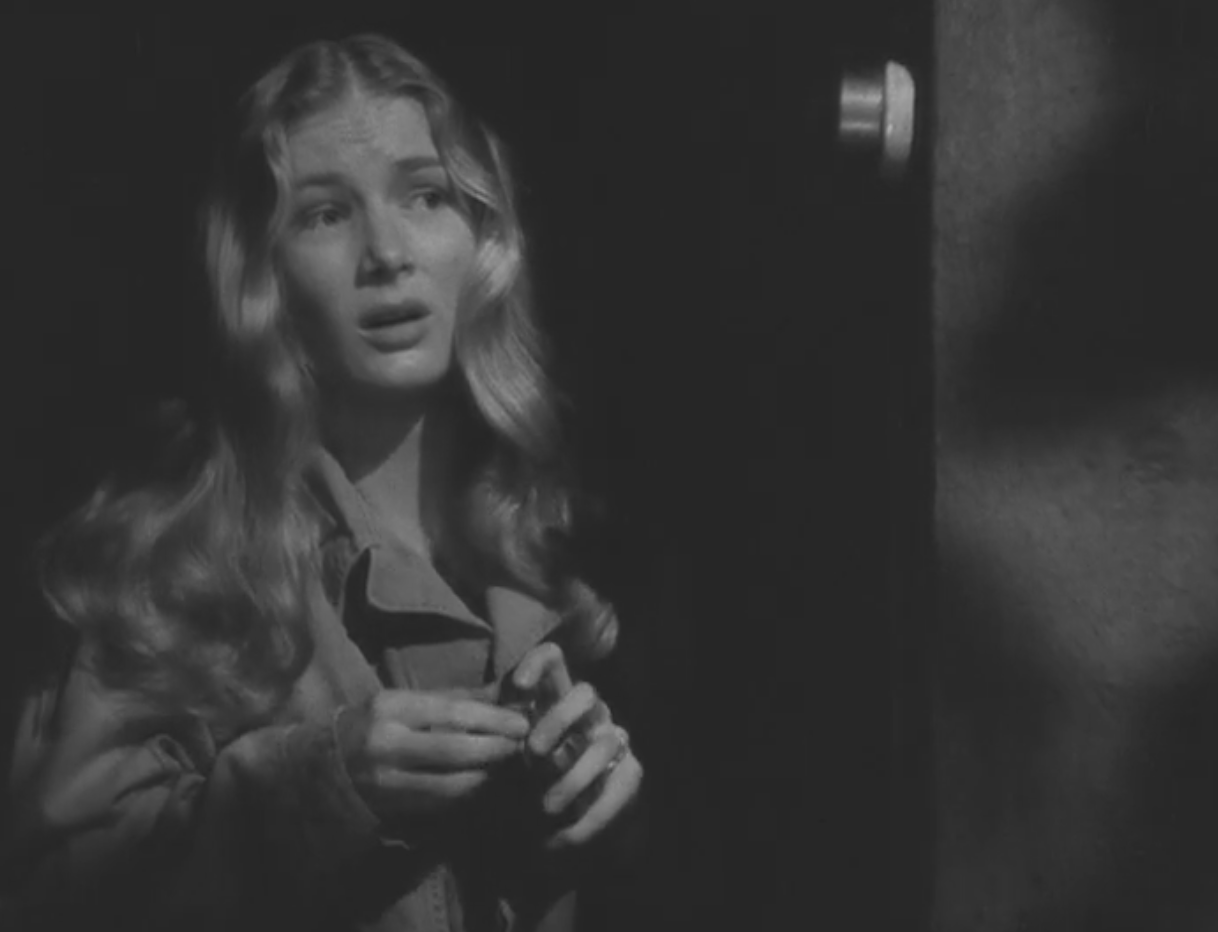
And in spite of Colbert’s horrified protests that Lake shouldn’t do what it is obvious that she is going to do, Lake walks out, pulls the pin out of the grenade and tucks it into her brassiere.
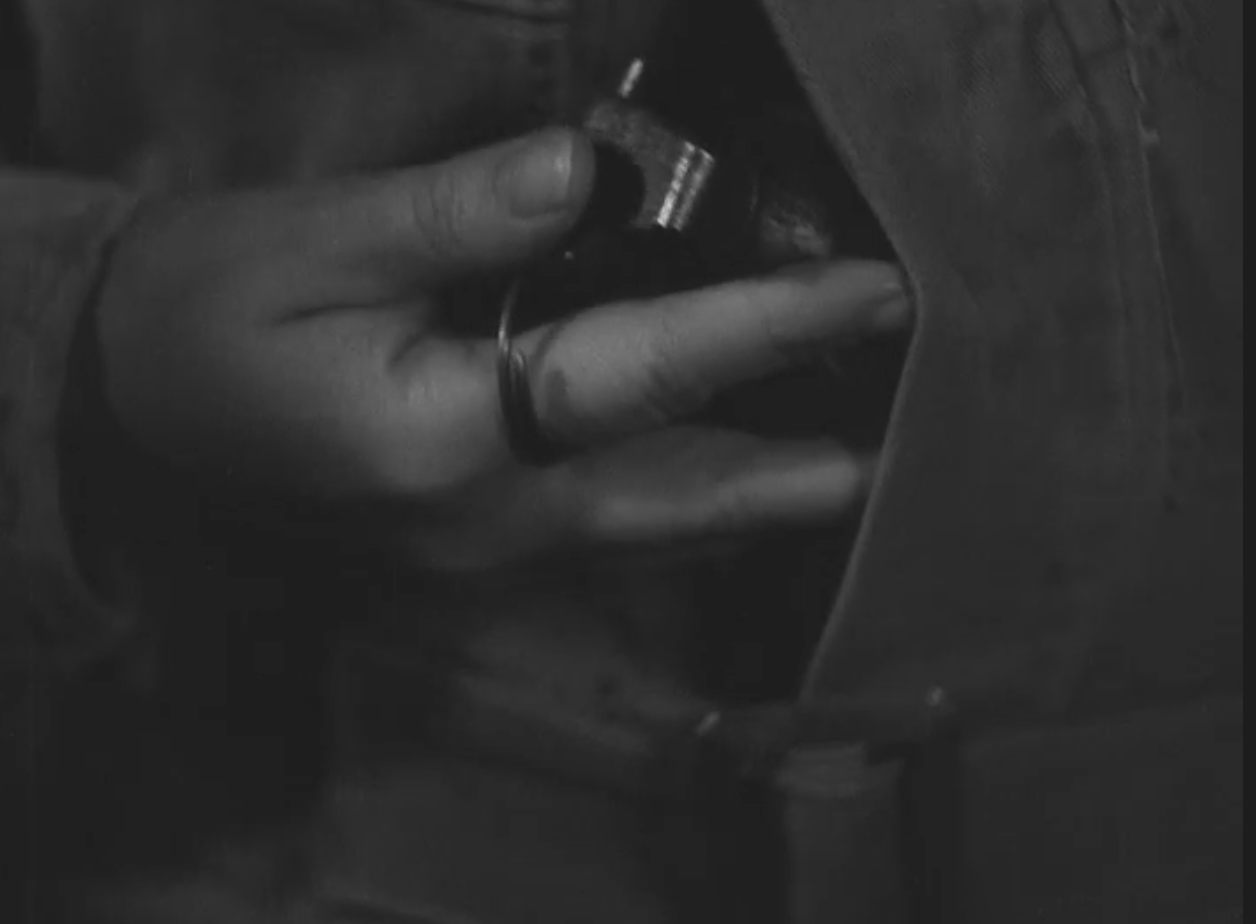
Lake walks out with her hands raised in apparent surrender.
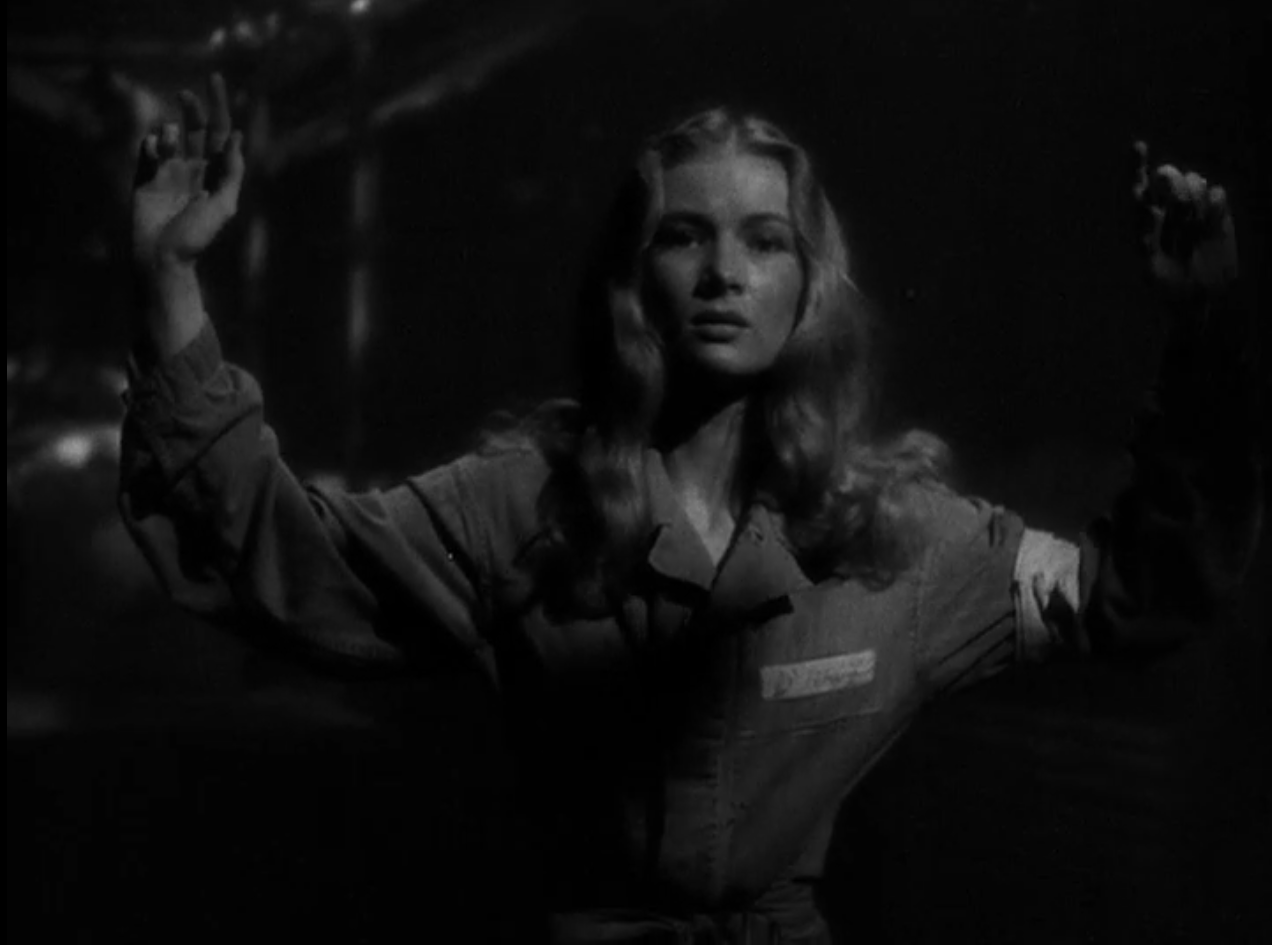
She is promptly surrounded by Japanese infantrymen and…
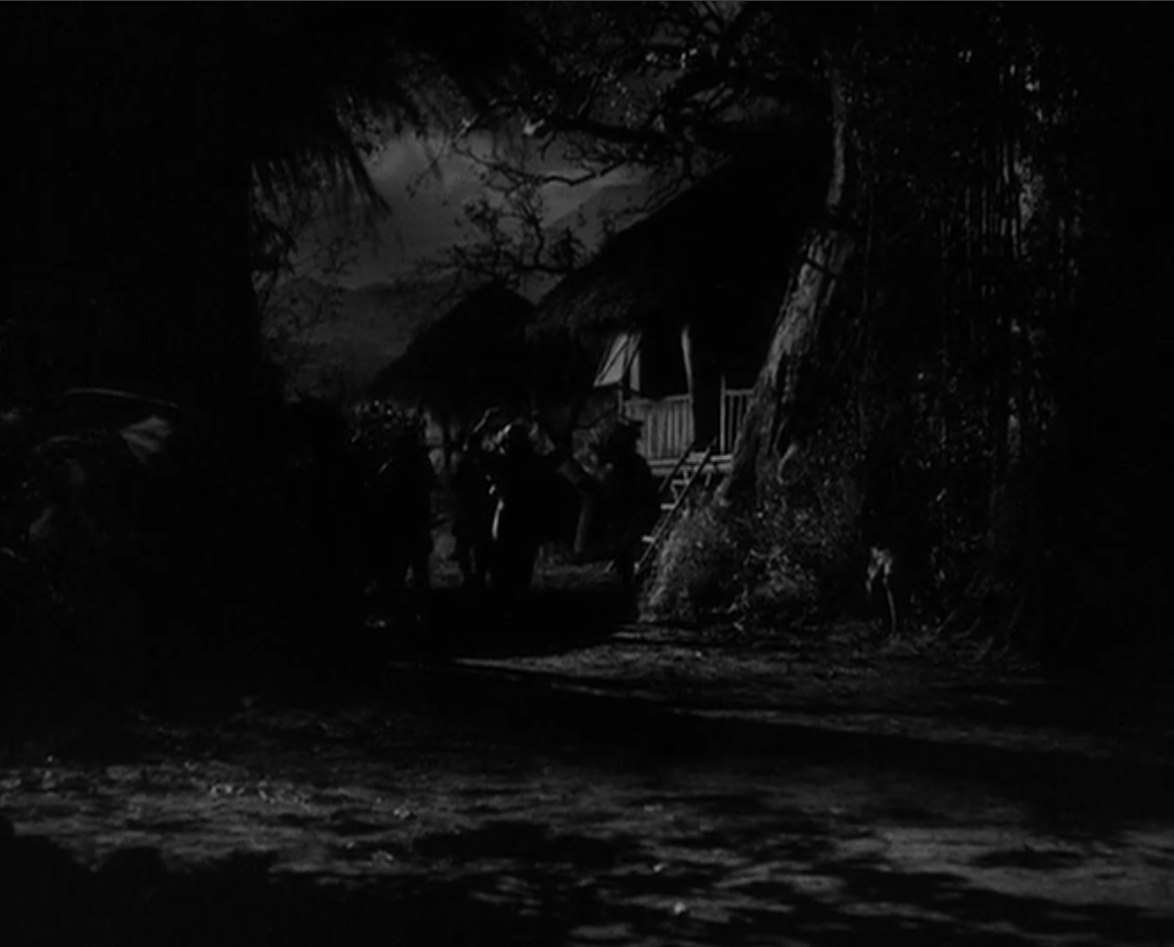
KABOOM!
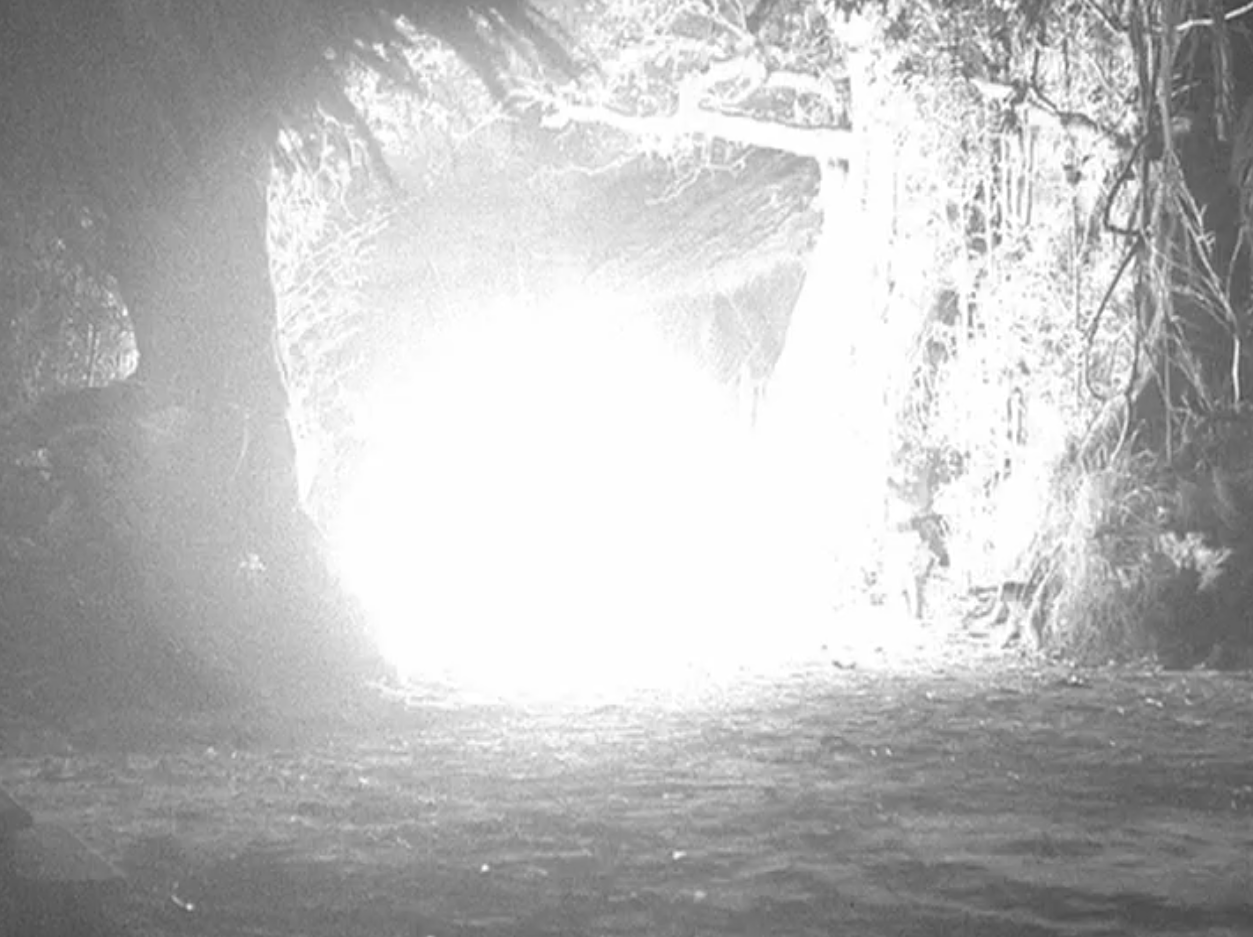
The consequence of the scene
I don’t know how the scene was received in September 1943 when So Proudly We Hail was released, but it’s pretty clear that we are meant to see Lake as a heroine here. By about a year later, though, this coding would have to be forgotten when the Japanese began kamikaze attacks on Allied warships. Paul Fussell (1924-2012), one America’s most perceptive writers on war, noted something similar happening to an earlier war myth:
Widely believed in the dark days of 1942, when America required relief after all the narratives about surrenders and sinkings and retreats, was the story of Air Corps Captain Colin P. Kelly. He is said to have immolated himself in the early days of the war by dropping a bomb, with the customary early-in-the-war precision, down the main stack of the Japanese battleship Haruna, and then, after ordering his crew to bail out, crashing his bomber into the foundering warship. (By the time of the kamikazes, this myth was forgotten, lest the kamikaze pilots be considered heroes rather than madmen.) Actually what Kelly damaged was not a battleship but a barely armed troop transport which did not sink, and he was killed not then but later, when a Japanese fighter jumped his plane. There is evidence he tried to bail out before anyone else but was carried down with the plane when his parachute caught on the escape door. (note omitted)1
And the need to stigmatize the vile enemy may help explain why this movie seems to have largely sunk out of sight,2, which I think is too bad, as not only does it deprive people of a chance to see how even history’s “good guys” use propaganda, but also a precedent for my own interest in self-sacrificing heroines. For those of you who don’t like the narrative arc that something like Auto-Icon is tending, what’s wrong with you? Self-sacrifice is a tradition with the imprimatur of patriotism! Are you anti-American, or something?
Notes
1Paul Fussell, Wartime: Understanding and Behavior in the Second World War. (New York and Oxford: Oxford University Press, 1989). Kindle electronic edition, Loc. 480. Back to main text.
My ineptness made me the last hired, first fired on the playground, and hence more than ever likely to be alone. Miss Tanner’s genial hounding continued so I conceived the idea of “takin an end for good” in jumprope. This way I could seem to be participating while remaining outside the fray. The girls who liked — yes liked –to jump rope hated having to take their turn at turning, so for a while I was popular in a windmillish sort of way. While I turned, I fantasized murdering watery moles and huggybears by walking into their midst with a hand grenade, concealed in my undershirt, like Veronica Lake blowing the Japs to bits with her loaded bra in So Proudly We Hail. It did not help. The thought of dying only made me feel worse.
See Florence King, Confessions of a Failed Southern Lady. (New York: St. Martin’s Press, 1990). p 73. Back to main text

Such a noble sacrifice by poor Nurse Olivia!
That is something that I never questioned when I was on my WWII kick when I was a pre-teen. Read every book I could find, memorized stats of ships and aircraft and tanks, etc. But it never occurred to me that that movie American charging and taking out the bunker with his last breath and grenade (never saw this film) was just the same as the Kamikaze pilot, just as desperate for his country ( or buddies, or family, more likely ) as the other was.
Time has lent more perspective, thankfully.
There is a difference between the “movie American charging and taking out the bunker with his last breath” and the Kamikaze pilot though. The kamikazes’ deaths were pre-planned and ordered by their superior officers, not spur-of-the-moment decisions by the individual, whatever their motives. They were not self-sacrifices any more than the victims of the Aztecs were.
Robert A. Heinlein was also in to the idea of heroic self sacrifice for one’s kin. The danger is that some young single men are very clever at finding reasons to commit massive violence if they won’t have to live with it afterwards.
Most mass shooters kill themselves as soon as they’re confronted with armed response, either civilian or police. In the ones where an armed civilian (or a police officer who isn’t a damn coward) was on the scene when the shooting started, the number of victims tends to be around 4 before the shooter is dead or (rarely) apprehended.
An element common to most of these shootings is the shooter was on one or more psychoactive drugs or other drugs that effect the mental state of the person taking them.
Assume a person is being treated for depression and/or anxiety but the psychiatrist or psychotherapist misses the patient’s thoughts of doing violent things to others.
If all that’s keeping the person’s violent tendencies in check is they’re too depressed to do anything or too anxious about getting caught before getting much killing done, or about what other people might think … then they get prescribed drugs that suppress depression and and/or anxiety.
Happy, go-lucky mass murderer? Going off to kill without a care in the world, then perhaps when they see a gun pointed back at them, they crash and in a “What have I done?!” moment they shoot themselves.
But the psychiatrists and psychotherapists “treating” these killers never get looked at, let alone even slightly blamed for not seeing their patients are ticking bombs.